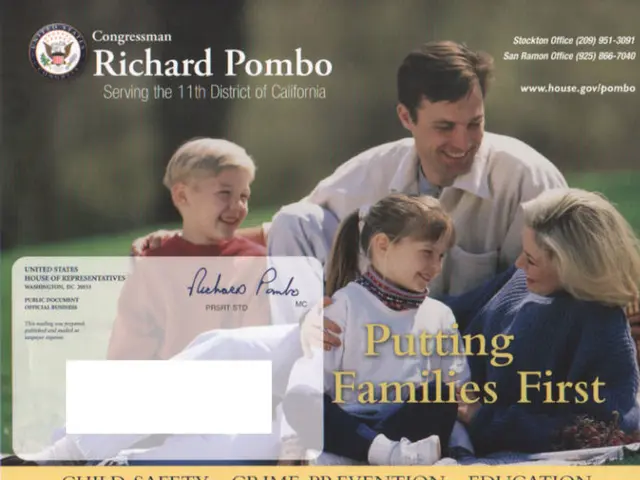Slay the Job Application Game: Proactive Tactics to Boost Your Odds
Proposing the right inquiries: strategies to effectively shape software development choices
Let's face it — job hunting can be a grueling, nerve-wracking experience. But don't let the stress get the best of you! Recruiters aren't infallible, and errors can easily slip into the application process. Bastian Hughes, a former human resources expert, shares some invaluable insights from his experience on how to play the game smartly and strengthen your prospects.
Chase Your Future — Don't Let Myopic Recruiters Hold You Back
Just because you haven't heard back from a company yet, it doesn't necessarily mean you're out of the game. Remember, recruiters make mistakes too. Demonstrating initiative and promptly reaching out when you feel the interview went well or if the waiting time seems excessively long could put you back in the running. It's even possible that the job offer was overlooked, so a well-timed follow-up might do the trick.
The Power of Persistence: Keep Chasing that Rejection
If you've received a rejection, don't lose hope! With a constructive approach, you could turn the tables. Hughes suggests that even in the face of an unexpected rejection, you should ask again. There's no harm in reopening the conversation, as sometimes, a second look from the recruiter might be all it takes to secure the position.
Keep Your CV Sharp as a Tack
To ensure that your crucial competencies are noticed, career coaches recommend designing a CV that fully showcases your relevant skills, experiences, and knowledge in a clear and concise manner[1]. This allows recruiters to evaluate your qualifications swiftly and effectively.
Dig Deeper into the Rejection
If your inquiries are met with a rejection, it's worth pursuing the conversation further. You might learn more about your shortcomings and how to improve your candidacy, or you could discover that you would be a strong fit for future opportunities within the company[1].
Source: ntv.de, awi/dpa
- Opportunities
- Initiative
- Follow-Up
- Job Market
Constructive Follow-Ups: Timing and Content Tips
Got the interview of your dreams, but still haven't heard back? Here's a comprehensive guide to re-engaging the employer and boosting your chances:
- Initial Waiting Period: Wait a few days (5-7 business days) after submission to demonstrate respect for the employer's process[1][4].
- Post-Interview: Send a thank-you email within 24 hours to leave a positive impression and reaffirm your interest[1][5].
- First Follow-Up: If you haven't heard back after a week, send a brief professional follow-up expressing continued interest and referencing something specific[1][2].
- Second Follow-Up: If the first message goes unanswered, wait an additional 7-10 business days before sending another, introducing new information or highlighting a recent achievement or relevant skill[1].
- Final Follow-Up: After about a month, reach out to ask for an update on the hiring status or confirm if the position has been filled[1].
Ace Your Follow-Ups: Best Practices for Content and Style
- Personalize Your Message: Catch the hiring manager's attention by referencing specific details from your application or interview[1][2][5].
- Express Enthusiasm and Value: Clearly state your continued interest and reiterate how your skills and experiences align with the role[2][4].
- Stay Brief and Professional: Keep follow-ups concise, polite, and error-free. Avoid demanding language or negativity[2][4].
- Add a Personal Touch: Where appropriate, mention a shared interest or memorable moment from your interaction to strengthen rapport and stand out[5].
Extra Tips
- Diversify Communication Channels: If emails go unanswered, try other channels like LinkedIn or a polite phone call. Always respect the company's preferred communication style[2].
- Use Technology Wisely: Utilize mail trackers, online portfolio services, and other tools to stay informed about message open-rates and optimize the timing of your follow-ups[2].
- Display a Professional Attitude: Persistent, thoughtful follow-ups demonstrate strong communication skills and a commitment to your career goals[4][5].
By adhering to these tips, you'll present yourself as a proactive, enthusiastic, and professional candidate, dramatically increasing your chances of standing out in a competitive hiring process.
[1] McKinley, P. (2019). The Ultimate Guide to Getting Called Back After Job Interviews. The Balance Careers.
[2] Toups, J. (2019). How Long Should You Wait to Follow Up After a Job Interview? Ladders.
[3] Eason, S. (2021). Busting Myths: Are Best Fit Candidates the Ones Who Wait the Longest After a Job Interview? Forbes.
[4] Lewis, M. (2020). The DOs and DONTs of Follow-Up Emails After a Job Interview. The Workforce.
[5] Feldman, K. (2020). Tips for Following Up After a Job Interview. The Job Network.
- To show your dedication and enhance your chances, consider vocational training programs that align with the job position and industry, as this could make your resume stand out and improve your career-development prospects.
- Financial stability is essential for business success. Therefore, it's crucial to research and understand the best financing options available, whether you are starting a business or seeking education-and-self-development opportunities, to ensure your long-term career sustainability.
- In pursuit of a successful vocational training outcome, community policy can play a significant role in the accessibility and affordability of such programs, ultimately impacting the job-search process and career-development opportunities in your desired field.







